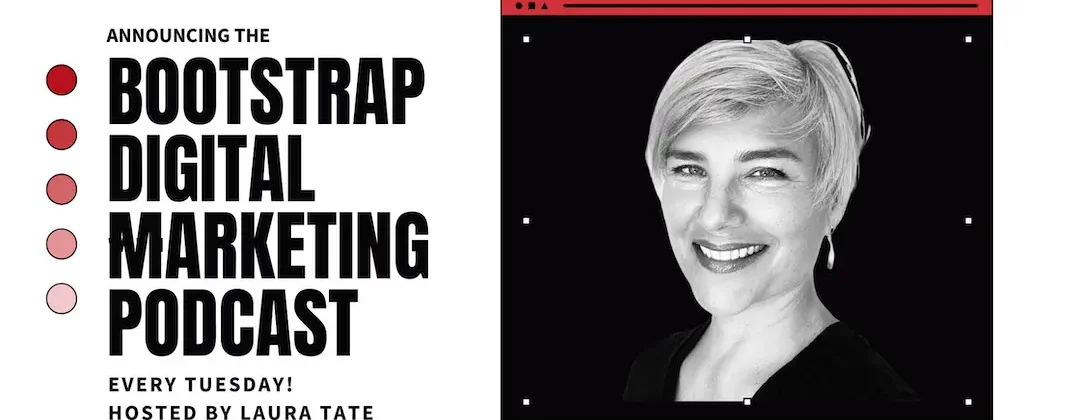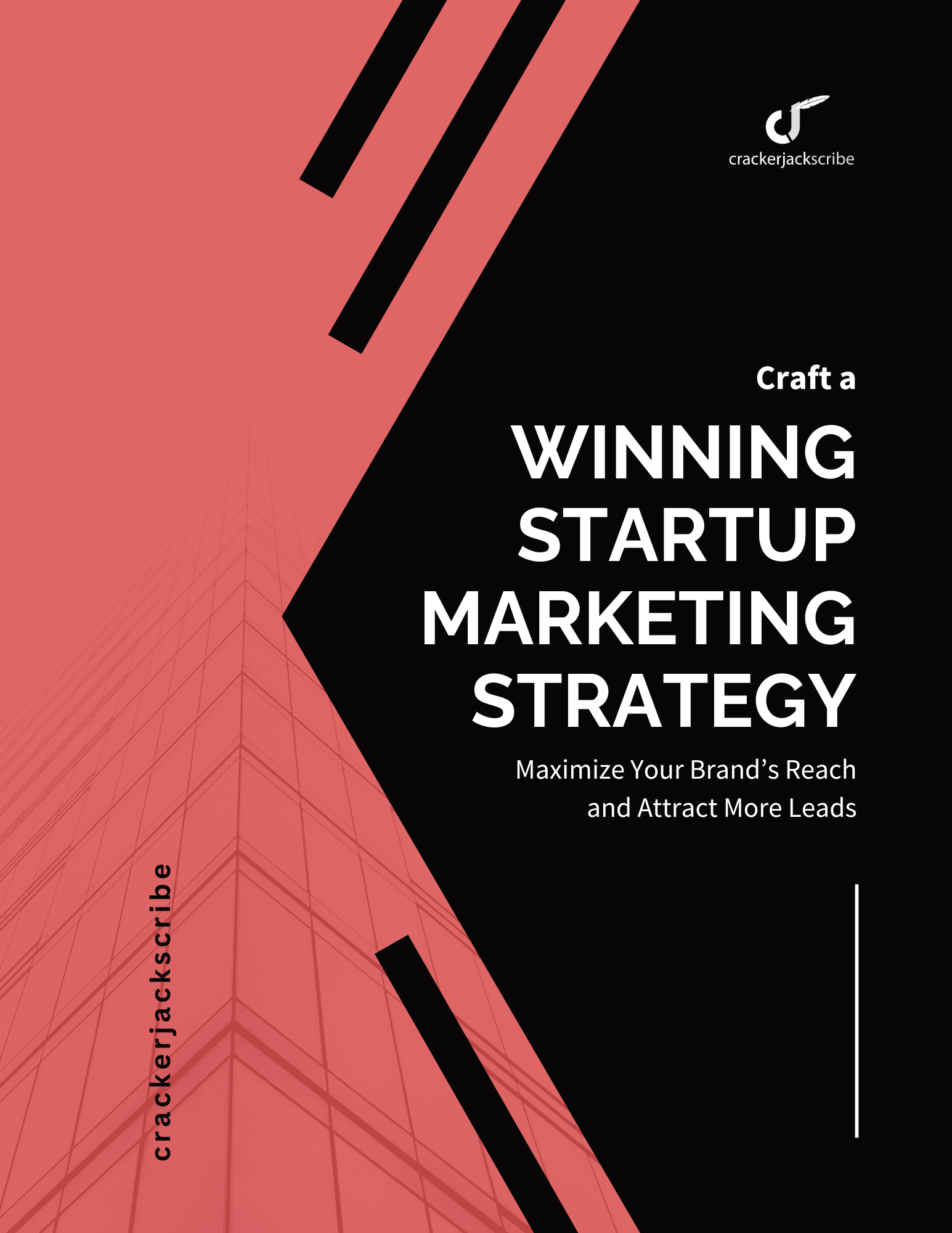
I’m happy to announce my new podcast that will give you easy-to-implement tips and advice on digital marketing. These weekly lessons will cover everything from the basics of digital marketing to advanced methods on ways to create a brand presence and reach your target audience online.
It’s been a while since I published a new article, but it’s long been my desire to get back to blogging and sharing my insights on using social media and content to help you market your business or any venture online.
So I decided to launch the Bootstrap Digital Marketing podcast to make it easier for you—and me—to get quick, actionable tips that you can implement right away.
You can listen to all episodes of this new podcast here on my blog or your favorite podcasting app. I’ll be including edited transcripts of each episode on my blog each week. Below is my first episode on goal setting. It’s the first in a series of episodes on creating a digital marketing strategy.
Let me know what you think in the comments section below this post or on my podcast page anchor.fm/bootstrapdigitalmarketing. You can also leave any questions I will answer in the following episodes.
Creating a Digital Marketing Strategy: Setting Goals
The first few episodes of this podcast will focus on creating a marketing strategy: How to do it and why you need one. Today, we’re going to talk about setting goals.
Listen here:
All Episodes
Edited Transcript:
Marketing Strategies: Setting SMART Goals

Why Setting Goals is Important
When Facebook launched to the public, I was co-teaching tango lessons and monthly tango dances with an ex-dance partner. Our efforts culminated in a three-day tango festival at the Burbank Marriott Hotel. People from all over the world attended. We had an orchestra, dance teachers, workshops, and it was a fantastic time. I considered it a success.
When I say our tango festival was successful, I mean successful in that we didn’t lose any money. So I look at it more like a three-day event similar to a wedding where everybody has a great time.
We were so lucky that we didn’t lose money on this because we didn’t have a solid marketing strategy. However, we did have to outline the steps we needed to take to meet our expenses somehow, and we broke even, which was spectacular because I didn’t want to lose money.
Using Goals to Define Success
The event was successful in one respect because I didn’t lose any money. But if I was to continue doing the tango events as a business, meeting my expenses is not a good business goal.
Instead, I would sit down and say, okay, how much money do I want to make from doing this event? That’s a worthy long-term goal [revenue], and maybe I can give myself a year. So my long-term goal is a year, and I’ve got a decent amount of time to plan and produce this festival.
Maybe I can come up with a percentage— I want to make 30 percent after expenses. So I work out my expenses—say it will cost me $20,000 to produce the festival, 30% would be $6,000. So that’s my long-term goal.
But how am I going to get there? How am I going to achieve my long-term goal? That’s when you sit down and work out the nitty-gritty details.
Now I’m going to outline my short-term goals.
An excellent way to work out the short-term marketing goals that will help you reach your long-term goal is to use the SMART method.
What are SMART Goals?
There are varying definitions of and ways to use SMART goals, whether personal, professional, career, or business goals.
So we’re talking specifically about business goals for the long-term goal and marketing goals for the short-term goals that will help you achieve your long-term goal.
S — Specific
The S in SMART stands for specific. Your goal must be clear so it can be executable and actionable. For example, if I was going to produce that tango festival again and had a long-term goal of generating 10% revenue after expenses, that’s my long-term goal; I would ask myself, How am I going to achieve that?
One tactic could be generating Web traffic. I’m going to create a landing page with a signup form, and I’m going to set a specific goal of getting more web traffic to get more people signed up for my event. Web traffic is actionable and achievable.
When thinking about your long-term goals, ask yourself: How will I achieve my long-term goal? What can I do, or what steps can I take right now to achieve that goal?
M — Measurable
The M in SMART stands for measurable. Can you measure your short-term goal? For example, for web traffic, I can install Google Analytics or another tracking tool on my website, telling me how many people have visited my landing page.
It’s essential to measure your goals to know there’s an end. For example, I know I need to get at least 3,539 website visitors (using industry average conversion rates*) to get enough signups (40) to meet my goal.
So when considering your goal, ask yourself: How much or how many? How will you know when it[your plan] is accomplished?
*(Conversion rates for a landing page show you the number of people who completed your call to action from everyone who landed on your page. Therefore, it’s essential to know your industry’s conversion rates for the campaign type you are executing. For example, the average conversion rate for the media/entertainment industry is 11.3%. The formula to calculate how much web traffic I would need to meet my goal is — Visitors (3,539)=Leads (40)/Conversion Rate (11.3%). )
A— Achievable
What is the A in SMART? Achievable or attainable. Can you accomplish this goal? Is it is it realistic? Ask yourself if you have the budget, the time, and the resources to achieve your SMART goal. If it’s yes, great, let’s keep going. If it’s not, keep brainstorming and see what else might be a better short-term goal to work on to help you reach your long-term goal.
R -Relevant
The R in SMART stands for relevancy. Do you have another way to achieve your long-term goal? Is this the best SMART goal to pursue at the time? Is there another method to help you achieve your goal within a specific time frame?
T – Timebound
Last but not least to consider is whether your goal is time-based or time-bound. What is the goal timeframe?
You want to have an end date or some timeframe to achieve your goal because it helps motivate you and helps prioritize your tasks to meet your goal.
If you don’t set a specific deadline, the goal will be a moving target, and you’re unlikely to reach it. For example, if you’re looking to increase your website traffic by 25%, how you achieve that differs depending on whether you intend to do it in three months or three years.
Having a specific end date helps you define your goal and further defines certain steps you need to take to reach your goal.
In Conclusion
Working out your long-term goal— really identifying what you want to achieve— and then outlining a plan with SMART goals that are specific, measurable, achievable, time-bound, and relevant will save you a great deal of time, effort, and money.
You don’t want to rely on luck as I did with that tango festival because we all know luck is not a good business strategy.
If you have any questions or comments, visit my anchor page— anchor.fm/ bootstrapdigitalmarketing. Leave a message, question, or comment, and I will respond in an upcoming show.
Please submit your questions via my podcast page https://anchor.fm/bootstrapdigitalmarketing or email me at laura@crackerjackscribe.com.
***
The bootstrap digital marketing podcast is produced by myself, Laura Tate, and my agency Crackerjack Scribe; visit crackerjackscribe.com to learn how we can help your business grow online.




Leave a Reply